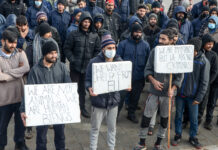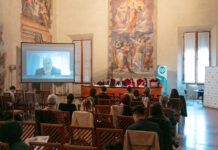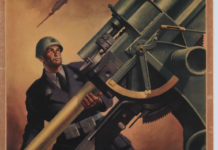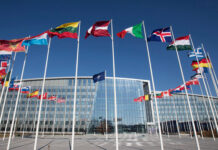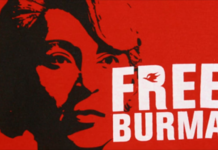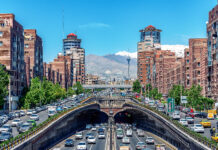Latest developments
Diplomacy falls silent in this long war between Ukraine and Russia. In October 2023, the invasion initiated by Moscow in February 2022 is exacting a heavy toll: casualties from both sides and civilians amount to nearly 500,000 individuals, with cities and infrastructure destroyed and the land devastated. Reading the reports from intelligence agencies, it’s evident that no one is winning. Everyone is losing this war. For the official Kyiv the situation appears to be complicated. On the battlefield, the military offensive launched in the summer of 2023 has led to the recapture of approximately 400 square kilometers of territory, against the 100,000 square kilometers still held by the Russians.
The army has shown incredible resilience, but now faces difficulties. Recruiting new fighters is challenging, and weapons from Europe and the United States, essential for resistance, arrive with significant delays. The reconquest of lost ground seems like an unattainable dream, with significant problems looming ahead. In foreign relations, Europe is beginning to fracture, with Slovakia announcing it will no longer provide arms, and Poland and Hungary distancing themselves. Internally, President Zelensky is grappling with a devastating economic crisis.
Simultaneously, a political-institutional crisis is looming: presidential elections are scheduled for March 2024, and Zelensky has announced plans to postpone them.
While Kyiv mourns, Moscow is not rejoicing. Russia currently controls a vastly larger territory than before. However, it’s essentially a useless territory, primarily inhabited by hostile populations, with one advantage: it directly connects Moscow to the Crimean Peninsula. But the cost paid by the Kremlin has been high in military terms, with hundreds of thousands of losses and the weakening of the entire military machine.
According to British intelligence, Russia faces strategic choices regarding the use of resources and manpower. Moscow may be forced to thin out its military presence on other borders. An official document states that “to maintain coverage over Ukraine, Russia will likely need to redeploy the Sams, which normally protect distant parts of Russia.” Furthermore, the war has certified that Russia is a second-tier power, with a fragile economy overly dependent on fossil fuel exports. In essence, this war is turning Moscow into a vassal of Beijing: if China were to reduce its imports of Russian oil and gas, it would spell the end for Moscow.
What are they fighting for
The Russian invasion on February 24, 2022, dramatically escalated the conflict that erupted in 2014. The Ukrainian armed forces are fighting with military support from many Western states (primarily the United States) to push Russian troops out of their borders and liberate the occupied territories. At the moment, this does not seem to involve Crimea, but it is not excluded that it may in the future.
The counteroffensive by Kyiv involves the regions of the self-proclaimed separatist Republics, recently annexed by Russia. These are the Donetsk and Luhansk regions where fighting began 8 years ago to prevent a repetition of what happened in Crimea. Although the separatists claimed to be fighting for the freedom of Donbass (with a large Russian-speaking and ethnically Russian population) against what they described as a military aggression by the central government forces, it is undeniable that the initial leaders of the uprising were all Russian citizens, in many cases belonging to Moscow’s security forces.
While ethnic and linguistic factors certainly play a role in the war, they do not explain everything. The Donetsk and Luhansk regions are not the only regions in Ukraine with a significant presence of Russian-speaking Ukrainian and ethnic Russian inhabitants, and Kyiv’s response (not only military but also political) had managed to limit the separatists to a highly circumscribed area in Donbass, accounting for approximately 7% of the national territory, for 8 years.
Country overview
Since its independence in 1991, Ukraine has been a country balancing between Europe, to which it belongs geographically, and Russia, with which it has shared not only the Soviet past but also, especially in the Eastern regions and along the Black Sea coast, a historical and cultural proximity. With the exception of the brief experience of the Orange Revolution in 2004, which led to the government of pro-European forces, the center of gravity in Kyiv has almost always shifted towards the East. There was a significant shift when former President Viktor Yanukovych unexpectedly reversed course regarding Ukraine’s path to European integration at the end of 2013.
The protests sparked by his decision not to sign the Association Agreement with the EU brought thousands of people to gather in the main square for days and nights. The protests were named EuroMaidan, after the main square Maidan Nezalezhnosti (Independence Square) in Kyiv and the Ukrainians’ desire for Europe. The demonstrations continued for weeks, despite attempts by riot police to remove the barricades and the biting cold of Kyiv’s winter. The climax came at the end of February when 84 protesters were killed by sniper fire. The final toll after more than 3 months of EuroMaidan was 103 deaths among the protesters and 13 among the police officers. The result was Yanukovych’s escape to Russia and the formation of a new government. This marked the beginning of the second phase of the Ukrainian crisis in 2014.
In response to the formation of the new government and Kyiv’s pro-European turn, Russia, through a maskirovka operation (covert war), took control of strategic structures in Crimea and supported the organization of a charade referendum on independence. Russia annexed the peninsula in less than a month. In addition to the military presence of the Black Sea Fleet, which would have been jeopardized by a potential future entry of Ukraine into NATO, Moscow’s reasons concern recent history. Crimea, with a majority Russian ethnicity and language, was “ceded” to Ukraine only in 1954 at the behest of Nikita Khrushchev when the internal borders of the USSR were little more than lines on paper. The annexation, formalized on March 21, was not recognized by the international community, and Crimea, effectively under Russian control, remains formally a disputed territory.
The pro-Russian and anti-Maidan wave spread beyond Crimea, also affecting the Eastern regions, including the Donbas basin, the so-called Donbas. There, armed men of not only local origin took control of institutions, held a referendum modeled after Crimea, and declared the independence of two new entities, the Donetsk and Luhansk People’s Republics (the capital cities of the two largest regions of Donbas). The central government responded with a military operation to reconquer the territory, which crystallized into the current low-intensity war along the ceasefire line established by the Minsk Agreements. Without Crimea and with the Eastern regions (industrialized and rich in natural resources) taken away from government control, what remained of Ukraine decisively embarked on the European path.
In 2014, Kyiv signed the fateful Association Agreement with the European Union, from which everything began, turning (perhaps forever) its back on Russia. In 2016, the signing of the agreement for the Deep and Comprehensive Free Trade Area (DCFTA), the free trade area resulting from the Association Agreement, gave new impetus to the economy through trade with the European Union. Relations with the main Western countries intensified in the fields of economy, state-building, rights, and above all defense. The military training of the Ukrainian armed forces and the supply of high-tech weapons (mostly from the United States) have radically transformed the country’s defense level, its reactive capacity, and its effectiveness. This has made a difference since the early days of the Russian invasion, when Kyiv managed to repel Moscow’s special forces’ attack on the capital, and is still making a difference against a Russian army in continuous retreat.
Key figure or organization: The character Sergei Viktorovich Lavrov
Sergei Viktorovich Lavrov (Moscow, March 21, 1950) is a Russian diplomat and politician, currently serving as the Minister of Foreign Affairs of Russia. Born in Moscow to a family of Armenian and Russian origins, he studied at the secondary school in Noginsk and graduated in international relations from the Moscow State Institute of International Relations in 1972. On March 9, 2004, Russian President Vladimir Putin appointed him Minister of Foreign Affairs, replacing Igor Ivanov. He has had turbulent relations with U.S. Secretary of State Condoleezza Rice and British counterpart David Miliband, particularly during the Russian-Georgian conflict in South Ossetia in August 2008. Between 2008 and 2012, during the presidency of Dmitry Medvedev, who was more liberal than both his predecessor and successor Putin, Lavrov adopted a more measured stance, not criticizing the Franco-British military intervention in Libya in 2011 and contesting anti-American laws passed by the Duma.
Focus 1 – The Horrible Cluster Bombs
Despite international bans and attempts to outlaw them, the use of cluster bombs is confirmed in Ukraine, at least by the Ukrainian army. Confirmation comes from the United States, which in an October 2023 statement indicated that they believe “Ukraine is using cluster bombs against Russia in an appropriate and effective manner.” This was stated in a remote press conference by White House National Security Council spokesman John Kirby, who added that “indeed, they are having an impact on Russia’s defensive maneuvers.” The United States had announced on July 7, 2023, the shipment of cluster bombs, despite criticism from Germany and other countries, as well as from organizations like Human Rights Watch, concerned about the possible impact of these weapons on the civilian population.
Focus 2 – A land “at the periphery”
The toponym Ukraine derives from the ancient East Slavic u okraina, formed by u (“near, at”) and okraina (“country”), with the Slavic root kraj (“territory”, “land”). Therefore, Ukraine means “on the edge” or “on the border” only in Russian, or “in the periphery.” In Ukrainian, krajina simply means “country, state.” Kraj and krajina are semantically analogous terms to the Italian “marca.”



